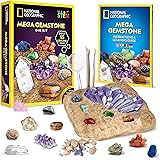Mastering the DIY Kitchen Remodel: A Comprehensive Guide to Transforming Your Space
Are you contemplating a significant update to your home, perhaps embarking on a full-scale DIY kitchen remodel that promises both functionality and aesthetic appeal? As demonstrated in the video above, transforming an outdated and dysfunctional kitchen into a bright, open-concept hub is an achievable endeavor, even for a 30-year-old home.
This comprehensive guide delves deeper into the strategies and considerations for undertaking such a project, expanding upon the practical insights shared in the video. The journey from a cramped, L-shaped kitchen with limited storage to a spacious, well-appointed culinary area often involves careful planning, strategic material selection, and a judicious balance of DIY effort with professional assistance.
Strategic Planning for a Seamless Kitchen Renovation
The foundation of any successful DIY kitchen remodel lies in meticulous planning. Prior to the commencement of any demolition, extensive research and conceptualization are typically undertaken. In the instance highlighted in the video, two decades of living in the home allowed for the incubation of numerous ideas aimed at enhancing functionality and flow.
Assessing Current Layout and Identifying Pain Points
- Dysfunctional Space: An L-shaped kitchen, particularly in older homes, often presents challenges with traffic flow and ergonomic efficiency.
- Limited Storage: The absence of adequate cabinet and drawer space is a common complaint, necessitating creative solutions for organization.
- Outdated Aesthetics: Original features, such as white Formica cabinets from an earlier era, frequently drive the desire for a modern refresh.
Understanding these pain points is crucial for formulating a renovation plan that directly addresses deficiencies and maximizes the potential of the space.
Envisioning the Future: Open Concept and Room Repurposing
A primary objective for many homeowners today is the creation of an open-concept living space, which inherently fosters connection and amplifies natural light. The video illustrates a strategic approach to this, involving the removal of a wall to merge the kitchen and dining areas. However, as is often discovered during such projects, structural elements or utilities, such as plumbing lines, can necessitate modifications to the original plan, resulting in a partial rather than full wall removal.
Beyond the kitchen footprint itself, older homes frequently offer opportunities for creative room repurposing to optimize the entire living environment. In the remodel presented, the formal dining room was ingeniously converted into a new laundry room, while the original formal living room became the new dining area. The former laundry room was then repurposed into an appliance pantry, demonstrating how a holistic view of the home can unlock significant functional improvements.
Navigating Material Selection and Budget-Conscious Choices
Material selection represents a significant portion of any kitchen renovation budget. Balancing desired aesthetics with financial constraints is a delicate act, where strategic choices can yield substantial savings without compromising quality.
Unfinished Stock Cabinets: A DIY Game Changer
The decision to procure unfinished stock cabinets from a surplus warehouse is a prime example of a budget-savvy approach. These cabinets, while requiring significant DIY effort for finishing, offer a customizable canvas. The selection of 42-inch upper cabinets, for instance, significantly increases storage capacity, addressing a common deficiency in older kitchens.
Furthermore, personal touches, such as the addition of rope detailing, can elevate the appearance of standard cabinetry, imparting a custom, high-end feel at a fraction of the cost. The finishing process—involving priming and painting—allows for precise color matching and a durable surface, reflecting the meticulous attention to detail that characterizes a successful DIY kitchen remodel.
Countertop Decisions: Granite vs. Butcher Block
Countertops are a focal point of any kitchen. The journey to selecting the perfect granite slab can be fraught with unexpected challenges, as highlighted in the video. Samples, though illustrative, may not fully represent the variations and patterns inherent in natural stone. Thus, physically visiting a granite yard and hand-selecting the specific slab is often recommended to ensure the final product aligns with expectations. This process underscores the importance of verifying material consistency beyond small samples.
For the island, a contrasting material such as butcher block can introduce warmth and texture, providing a practical and aesthetically pleasing work surface. Utilizing flooring materials to construct a custom butcher block top is another testament to resourceful DIY techniques, requiring careful sanding and staining to achieve a durable and beautiful finish.
Appliance Integration: Balancing Performance and Price
Selecting appliances involves balancing brand reputation, performance features, and budget. The Frigidaire Professional Gallery series was chosen for this particular remodel, reflecting a preference for a cohesive and high-performing appliance suite. Strategic purchasing, including leveraging sales, military discounts, and price matching, can substantially reduce the overall investment. For example, double ovens originally priced at $24.99 were acquired for approximately $1400 through diligent shopping.
The Execution Phase: A Blend of DIY and Professional Expertise
While the essence of a DIY kitchen remodel is hands-on involvement, certain tasks necessitate professional expertise to ensure safety and compliance with building codes.
Demolition and Structural Adjustments
The initial phase involves demolition, a process that can be both cathartic and demanding. Once the kitchen is stripped down, the groundwork for structural changes, such as wall removal and utility rerouting, is laid. The video explicitly mentions that major tasks like electrical work, wall modifications, and plumbing adjustments were entrusted to a contractor. This prudent approach ensures that critical infrastructure is handled by qualified professionals, minimizing risks and ensuring proper functionality.
Flooring and Cabinet Installation
With the foundational work complete, the installation of flooring typically precedes the placement of lower cabinets. The methodical process of laying new floors sets the stage for the rest of the kitchen. Upper cabinets are often installed first, providing a clear reference point for the layout and allowing for easier access. The subsequent installation of lower cabinets and the construction of custom elements, such as an island formed from three separate cabinets wrapped to create a cohesive unit, highlight the detailed carpentry involved in a comprehensive DIY approach.
Finishing Touches: Countertops, Sinks, and Backsplash
The installation of countertops is a pivotal moment, bringing significant visual definition to the kitchen. The free sink provided by the granite company, though not initially intended, serves as a practical solution, demonstrating the adaptability often required in renovation projects. Finally, the installation of the backsplash, carefully chosen to complement the selected granite, ties the entire design together, adding texture and visual interest. The choice of backsplash is another area where initial intentions might shift as the project evolves, reinforcing the dynamic nature of design decisions during a live remodel.







